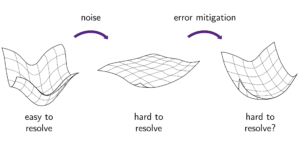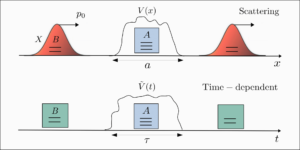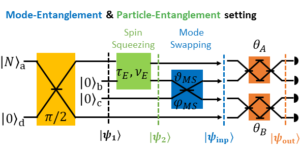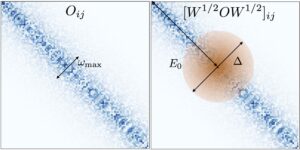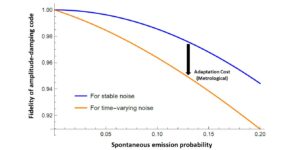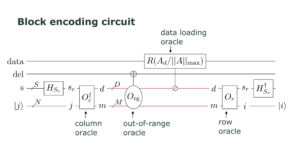1Instituto de Investigaciones Físicas de Mar del Plata (IFIMAR), Facultad de Ciencias Exactas y Naturales, Universidad Nacional de Mar del Plata & CONICET, 7600 Mar del Plata, Argentina
2Department of Applied Physics and Physics, Yale University, New Haven, Connecticut 06520, USA
3Yale Quantum Institute, Yale University, New Haven, Connecticut 06520, USA
4Department of Physics, University of Connecticut, Storrs, Connecticut, USA
5Department of Chemistry, Yale University, P.O. Box 208107, New Haven, Connecticut 06520-8107, USA
6Departamento de Física “J. J. Giambiagi” and IFIBA, FCEyN, Universidad de Buenos Aires, 1428 Buenos Aires, Argentina
Find this paper interesting or want to discuss? Scite or leave a comment on SciRate.
Abstract
Parametric gates and processes engineered from the perspective of the static effective Hamiltonian of a driven system are central to quantum technology. However, the perturbative expansions used to derive static effective models may not be able to efficiently capture all the relevant physics of the original system. In this work, we investigate the conditions for the validity of the usual low-order static effective Hamiltonian used to describe a Kerr oscillator under a squeezing drive. This system is of fundamental and technological interest. In particular, it has been used to stabilize Schrödinger cat states, which have applications for quantum computing. We compare the states and energies of the effective static Hamiltonian with the exact Floquet states and quasi-energies of the driven system and determine the parameter regime where the two descriptions agree. Our work brings to light the physics that is left out by ordinary static effective treatments and that can be explored by state-of-the-art experiments.
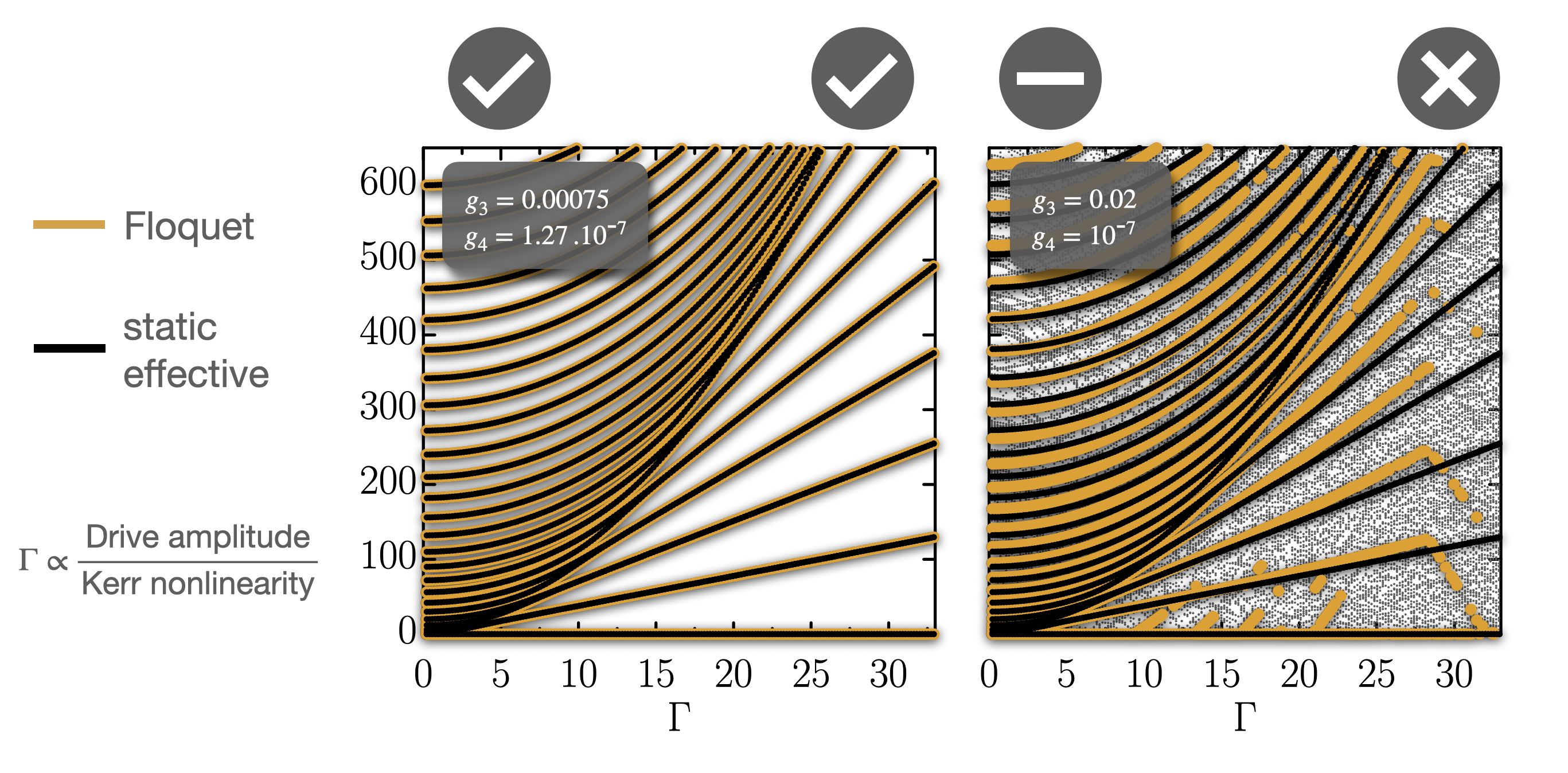
Featured image: Spectrum o excitation energies and respective quasi energies for the Static effective Hamiltonian (black) and the Floquet operator (orange). Two examples: one where the static effective description works perfectly, and one where it does not. We quantify this as a function of nonlinearity parameter $g_3$ and $g_4$, and provide a parameter map.
Popular summary
► BibTeX data
► References
[1] P. L. Kapitza, Soviet Phys. JETP 21, 588–592 (1951).
[2] L. D. Landau and E. M. Lifshitz, Mechanics: Volume 1, Vol. 1 (Butterworth-Heinemann, 1976).
[3] J. Venkatraman, X. Xiao, R. G. Cortiñas, A. Eickbusch, and M. H. Devoret, Phys. Rev. Lett. 129, 100601 (2022a).
https://doi.org/10.1103/PhysRevLett.129.100601
[4] Z. Wang and A. H. Safavi-Naeini, “Quantum control and noise protection of a Floquet $0-pi$ qubit,” (2023), arXiv:2304.05601 [quant-ph].
arXiv:2304.05601
[5] W. Paul, Rev. Mod. Phys. 62, 531 (1990).
https://doi.org/10.1103/RevModPhys.62.531
[6] N. Goldman and J. Dalibard, Phys. Rev. X 4, 031027 (2014).
https://doi.org/10.1103/PhysRevX.4.031027
[7] D. J. Wineland, Rev. Mod. Phys. 85, 1103 (2013).
https://doi.org/10.1103/RevModPhys.85.1103
[8] C. D. Bruzewicz, J. Chiaverini, R. McConnell, and J. M. Sage, Applied Physics Reviews 6, 021314 (2019).
https://doi.org/10.1063/1.5088164
[9] W. Magnus, Commun Pure Appl Math 7, 649 (1954).
https://doi.org/10.1002/cpa.3160070404
[10] F. Fer, Bull. Classe Sci. Acad. R. Bel. 21, 818 (1958).
[11] R. R. Ernst, G. Bodenhausen, and A. Wokaun, Principles of Nuclear Magnetic Resonance in One and Two Dimensions (Oxford University Press, Oxford, 1994).
[12] U. Haeberlen, High Resolution NMR in Solids Selective Averaging: Supplement 1 Advances in Magnetic Resonance, Advances in magnetic resonance. Supplement (Elsevier Science, 2012).
https://books.google.com.br/books?id=z_V-5uCpByAC
[13] R. M. Wilcox, J. Math. Phys. 8, 962 (1967).
https://doi.org/10.1063/1.1705306
[14] X. Xiao, J. Venkatraman, R. G. Cortiñas, S. Chowdhury, and M. H. Devoret, “A diagrammatic method to compute the effective Hamiltonian of driven nonlinear oscillators,” (2023), arXiv:2304.13656 [quant-ph].
arXiv:2304.13656
[15] M. Marthaler and M. I. Dykman, Phys. Rev. A 73, 042108 (2006).
https://doi.org/10.1103/PhysRevA.73.042108
[16] M. Marthaler and M. I. Dykman, Phys. Rev. A 76, 010102 (2007).
https://doi.org/10.1103/PhysRevA.76.010102
[17] M. Dykman, Fluctuating nonlinear oscillators: from nanomechanics to quantum superconducting circuits (Oxford University Press, 2012).
[18] W. Wustmann and V. Shumeiko, Phys. Rev. B 87, 184501 (2013).
https://doi.org/10.1103/PhysRevB.87.184501
[19] P. Krantz, A. Bengtsson, M. Simoen, S. Gustavsson, V. Shumeiko, W. Oliver, C. Wilson, P. Delsing, and J. Bylander, Nature communications 7, 11417 (2016).
https://doi.org/10.1038/ncomms11417
[20] N. Frattini, U. Vool, S. Shankar, A. Narla, K. Sliwa, and M. Devoret, App. Phys. Lett. 110, 222603 (2017).
https://doi.org/10.1063/1.4984142
[21] P. T. Cochrane, G. J. Milburn, and W. J. Munro, Phys. Rev. A 59, 2631 (1999).
https://doi.org/10.1103/PhysRevA.59.2631
[22] H. Goto, Scientific Reports 6, 21686 (2016).
https://doi.org/10.1038/srep21686
[23] H. Goto, Journal of the Physical Society of Japan 88, 061015 (2019).
https://doi.org/10.7566/JPSJ.88.061015
[24] H. Goto and T. Kanao, Phys. Rev. Research 3, 043196 (2021).
https://doi.org/10.1103/PhysRevResearch.3.043196
[25] S. Puri, L. St-Jean, J. A. Gross, A. Grimm, N. E. Frattini, P. S. Iyer, A. Krishna, S. Touzard, L. Jiang, A. Blais, S. T. Flammia, and S. M. Girvin, Sci. Adv. 6, 5901 (2020).
https://doi.org/10.1126/sciadv.aay5901
[26] B. Wielinga and G. J. Milburn, Phys. Rev. A 48, 2494 (1993).
https://doi.org/10.1103/PhysRevA.48.2494
[27] J. Chávez-Carlos, T. L. Lezama, R. G. Cortiñas, J. Venkatraman, M. H. Devoret, V. S. Batista, F. Pérez-Bernal, and L. F. Santos, npj Quantum Information 9, 76 (2023).
https://doi.org/10.1038/s41534-023-00745-1
[28] M. A. P. Reynoso, D. J. Nader, J. Chávez-Carlos, B. E. Ordaz-Mendoza, R. G. Cortiñas, V. S. Batista, S. Lerma-Hernández, F. Pérez-Bernal, and L. F. Santos, “Quantum tunneling and level crossings in the squeeze-driven Kerr oscillator,” (2023), arXiv:2305.10483 [quant-ph].
https://doi.org/10.1103/PhysRevA.108.033709
arXiv:2305.10483
[29] Z. Wang, M. Pechal, E. A. Wollack, P. Arrangoiz-Arriola, M. Gao, N. R. Lee, and A. H. Safavi-Naeini, Phys. Rev. X 9, 021049 (2019).
https://doi.org/10.1103/PhysRevX.9.021049
[30] A. Grimm, N. E. Frattini, S. Puri, S. O. Mundhada, S. Touzard, M. Mirrahimi, S. M. Girvin, S. Shankar, and M. H. Devoret, Nature 584, 205 (2020).
https://doi.org/10.1038/s41586-020-2587-z
[31] J. Venkatraman, R. G. Cortinas, N. E. Frattini, X. Xiao, and M. H. Devoret, “Quantum interference of tunneling paths under a double-well barrier,” (2022b), arXiv:2211.04605 [quant-ph].
https://doi.org/10.48550/ARXIV.2211.04605
arXiv:2211.04605
[32] D. Iyama, T. Kamiya, S. Fujii, H. Mukai, Y. Zhou, T. Nagase, A. Tomonaga, R. Wang, J.-J. Xue, S. Watabe, S. Kwon, and J.-S. Tsai, “Observation and manipulation of quantum interference in a superconducting Kerr parametric oscillator,” (2023), arXiv:2306.12299 [quant-ph].
https://doi.org/10.1038/s41467-023-44496-1
arXiv:2306.12299
[33] N. E. Frattini, R. G. Cortiñas, J. Venkatraman, X. Xiao, Q. Su, C. U. Lei, B. J. Chapman, V. R. Joshi, S. Girvin, R. J. Schoelkopf, et al., arXiv preprint arXiv:2209.03934 (2022).
arXiv:2209.03934
[34] J. Koch, T. M. Yu, J. Gambetta, A. A. Houck, D. I. Schuster, J. Majer, A. Blais, M. H. Devoret, S. M. Girvin, and R. J. Schoelkopf, Phys. Rev. A 76, 042319 (2007).
https://doi.org/10.1103/PhysRevA.76.042319
[35] S. M. Girvin, in Proceedings of the Les Houches Summer School on Quantum Machines, edited by B. H. M. H. Devoret, R. J. Schoelkopf and L. Cugliándolo (Oxford University Press Oxford, Oxford, UK, 2014) pp. 113–256.
[36] S. Puri, S. Boutin, and A. Blais, npj Quantum Information 3, 1 (2017).
https://doi.org/10.1038/s41534-017-0019-1
[37] C. Chamberland, K. Noh, P. Arrangoiz-Arriola, E. T. Campbell, C. T. Hann, J. Iverson, H. Putterman, T. C. Bohdanowicz, S. T. Flammia, A. Keller, G. Refael, J. Preskill, L. Jiang, A. H. Safavi-Naeini, O. Painter, and F. G. Brandão, PRX Quantum 3, 010329 (2022), publisher: American Physical Society.
https://doi.org/10.1103/PRXQuantum.3.010329
[38] D. Ruiz, R. Gautier, J. Guillaud, and M. Mirrahimi, Phys. Rev. A 107, 042407 (2023).
https://doi.org/10.1103/PhysRevA.107.042407
[39] R. Gautier, A. Sarlette, and M. Mirrahimi, PRX Quantum 3, 020339 (2022).
https://doi.org/10.1103/PRXQuantum.3.020339
[40] H. Putterman, J. Iverson, Q. Xu, L. Jiang, O. Painter, F. G. Brandão, and K. Noh, Phys. Rev. Lett. 128, 110502 (2022), publisher: American Physical Society.
https://doi.org/10.1103/PhysRevLett.128.110502
[41] J. H. Shirley, Phys. Rev. 138, B979 (1965).
https://doi.org/10.1103/PhysRev.138.B979
[42] V. Sivak, N. Frattini, V. Joshi, A. Lingenfelter, S. Shankar, and M. Devoret, Phys. Rev. Applied 11, 054060 (2019).
https://doi.org/10.1103/PhysRevApplied.11.054060
[43] D. A. Wisniacki, Europhysics Lett. 106, 60006 (2014).
https://doi.org/10.1209/0295-5075/106/60006
[44] M. Mirrahimi, Z. Leghtas, V. V. Albert, S. Touzard, R. J. Schoelkopf, L. Jiang, and M. H. Devoret, New Journal of Physics 16, 045014 (2014).
https://doi.org/10.1088/1367-2630/16/4/045014
[45] L. F. Santos, M. Távora, and F. Pérez-Bernal, Phys. Rev. A 94, 012113 (2016).
https://doi.org/10.1103/PhysRevA.94.012113
[46] F. Evers and A. D. Mirlin, Rev. Mod. Phys. 80, 1355 (2008).
https://doi.org/10.1103/RevModPhys.80.1355
[47] M. I. Dykman and M. A. Krivoglaz, Physica Status Solidi (B) 68, 111 (1975).
https://doi.org/10.1002/pssb.2220680109
[48] J. Venkatraman, X. Xiao, R. G. Cortiñas, and M. H. Devoret, “On the static effective Lindbladian of the squeezed Kerr oscillator,” (2022c), arXiv:2209.11193 [quant-ph].
arXiv:2209.11193
[49] J. Chávez-Carlos, R. G. Cortiñas, M. A. P. Reynoso, I. García-Mata, V. S. Batista, F. Pérez-Bernal, D. A. Wisniacki, and L. F. Santos, “Driving superconducting qubits into chaos,” (2023), arXiv:2310.17698 [quant-ph].
arXiv:2310.17698
[50] I. García-Mata, E. Vergini, and D. A. Wisniacki, Phys. Rev. E 104, L062202 (2021).
https://doi.org/10.1103/PhysRevE.104.L062202
Cited by
[1] Taro Kanao and Hayato Goto, “Fast elementary gates for universal quantum computation with Kerr parametric oscillator qubits”, Physical Review Research 6 1, 013192 (2024).
[2] Francesco Iachello, Rodrigo G. Cortiñas, Francisco Pérez-Bernal, and Lea F. Santos, “Symmetries of the squeeze-driven Kerr oscillator”, Journal of Physics A Mathematical General 56 49, 495305 (2023).
[3] Jorge Chávez-Carlos, Miguel A. Prado Reynoso, Ignacio García-Mata, Victor S. Batista, Francisco Pérez-Bernal, Diego A. Wisniacki, and Lea F. Santos, “Driving superconducting qubits into chaos”, arXiv:2310.17698, (2023).
The above citations are from SAO/NASA ADS (last updated successfully 2024-03-26 04:33:25). The list may be incomplete as not all publishers provide suitable and complete citation data.
On Crossref’s cited-by service no data on citing works was found (last attempt 2024-03-26 04:33:23).
This Paper is published in Quantum under the Creative Commons Attribution 4.0 International (CC BY 4.0) license. Copyright remains with the original copyright holders such as the authors or their institutions.
- SEO Powered Content & PR Distribution. Get Amplified Today.
- PlatoData.Network Vertical Generative Ai. Empower Yourself. Access Here.
- PlatoAiStream. Web3 Intelligence. Knowledge Amplified. Access Here.
- PlatoESG. Carbon, CleanTech, Energy, Environment, Solar, Waste Management. Access Here.
- PlatoHealth. Biotech and Clinical Trials Intelligence. Access Here.
- Source: https://quantum-journal.org/papers/q-2024-03-25-1298/
- :has
- :is
- :not
- :where
- ][p
- 07
- 1
- 10
- 11
- 12
- 13
- 14
- 15%
- 16
- 17
- 19
- 1951
- 1994
- 1999
- 20
- 2006
- 2008
- 2012
- 2013
- 2014
- 2016
- 2017
- 2019
- 2020
- 2021
- 2022
- 2023
- 2024
- 22
- 23
- 24
- 25
- 26%
- 27
- 28
- 29
- 30
- 31
- 32
- 33
- 35%
- 36
- 39
- 40
- 41
- 43
- 49
- 50
- 7
- 8
- 80
- 87
- 9
- a
- Able
- above
- ABSTRACT
- access
- Achieve
- advances
- affiliations
- against
- AL
- All
- American
- and
- app
- applications
- applied
- approach
- ARE
- AS
- attempt
- author
- authors
- averaging
- barrier
- BE
- been
- Black
- Box
- Break
- Brings
- Buenos Aires
- bull
- by
- campbell
- CAN
- capture
- CAT
- central
- Chaos
- chemistry
- COM
- comment
- Common
- Commons
- Communications
- compare
- complete
- computation
- Compute
- computers
- computing
- conditions
- Consider
- control
- copyright
- created
- data
- de
- del
- derive
- describe
- description
- Determine
- Diego
- dimensions
- discuss
- does
- drive
- driven
- driving
- e
- E&T
- Effective
- efficiently
- engineered
- exact
- examples
- existing
- experimental
- experiments
- Explored
- FAST
- faster
- For
- found
- Francisco
- from
- function
- fundamental
- future
- GAO
- Gates
- General
- goldman
- GoTo
- gross
- harvard
- Have
- haven
- High
- holders
- holds
- However
- HTTPS
- i
- image
- important
- in
- information
- Institute
- institutions
- interest
- interesting
- Interference
- International
- into
- investigate
- IT
- ITS
- Japan
- JavaScript
- Joshi
- journal
- knowledge
- Koch
- Kwon
- larger
- Last
- Leave
- Lee
- left
- Level
- License
- light
- limits
- List
- Machines
- Manipulation
- map
- mar
- math
- mathematical
- max-width
- May..
- mechanics
- method
- models
- Month
- Nature
- New
- no
- Noise
- nonlinear
- nuclear
- of
- oliver
- on
- ONE
- open
- operator
- or
- Orange
- ordinary
- original
- our
- out
- Oxford
- oxford university
- pages
- painter
- Paper
- parameter
- parameters
- particular
- paths
- Paul
- perfectly
- perspective
- physical
- Physics
- plan
- plato
- Plato Data Intelligence
- PlatoData
- press
- principles
- Proceedings
- processes
- properties
- protected
- protection
- provide
- provides
- published
- publisher
- publishers
- pure
- Push
- Quantum
- quantum computers
- quantum computing
- quantum information
- quantum technology
- Qubit
- qubits
- R
- references
- regime
- regions
- relevant
- remains
- Reports
- research
- Resolution
- resonance
- respective
- review
- Reviews
- ruiz
- s
- School
- SCI
- Science
- scientific
- selective
- Society
- some
- Sources
- Spectrum
- stabilize
- state-of-the-art
- States
- static
- Status
- Successfully
- such
- suitable
- summer
- superconducting
- supplement
- system
- Taro
- technological
- Technology
- that
- The
- their
- theory
- These
- this
- Title
- to
- treatments
- tsai
- two
- Uk
- under
- understand
- Universal
- university
- updated
- URL
- used
- usual
- validity
- Values
- Versus
- very
- volume
- W
- wang
- want
- was
- we
- which
- Wilson
- with
- Work
- works
- X
- xiao
- year
- zephyrnet





